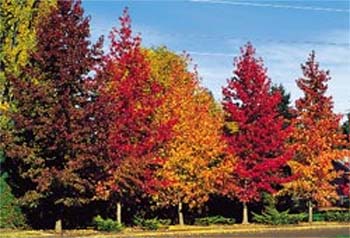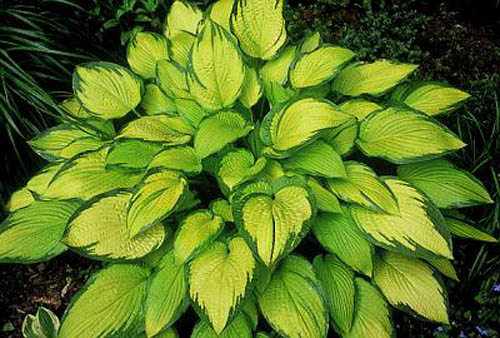Why is Gardening for Wildlife so important today? The answer is that habitat used by wildlife is rapidly disappearing due to suburban sprawl and loss of farmlands. There is now much less habitat for birds, butterflies and other creatures to use. Also much of the land along migration routes no longer provides the food, water, and cover that birds and butterflies need. By gardening with wildlife in mind, we can help make up for the loss of these traditional habitats.
The Official Backyard Wildlife Habitat site summed it up when they said:
“The population boom has changed forever the living conditions of our wildlife. We humans invaded the animals habitat and forced them to live among us. By planting only berry-producing shrubs and trees which bear fruit, my whole property has become a wildlife habitat. To aid in my war against insects, I encourage a large population of birds in my yard by supplying them with their basic needs.”
To attract and help wildlife, it is important to consider their requirements for food, shelter, water, and a place to raise their young. Take into consideration the size of your backyard, what plants are already present, and what wildlife you would like to attract. Form a plan, consider mature plant size, shape and spacing. A sketch is particularly helpful in planning where future shade will be needed and where shading may not be desirable. Allow flexibility in your plan to provide for replacing such trees or shrubs. Remember that open space is important too.
Plants are perhaps the most important part of a backyard habitat because they provide an environment for the family as well as for songbirds and other wildlife. Plants provide shelter, nesting sites, and a variety of foods such as fruits that may otherwise be unavailable. Proper selection of plants can fill family needs for beauty and comfort while providing a haven for wildlife. Even dead and dying trees provide nesting sites for many species such as owls, flying squirrels, and other cavity-nesters.
Plants are the primary source of energy supporting food chain even in your backyard environment. Plant parts such as leaves, twigs, bark, roots, fruits, nuts, and seeds are eaten by insects, mammals, and birds that in turn are eaten to sustain larger animals. Leaves, nuts, fruits, and seeds are available only seasonally and the time of year differs by species. Therefore, the diets of many wildlife species also change. The backyard garden that provides greatest diversity of plants will provide better food source.
When choosing your plants, make sure to include at least one good clump of evergreen trees and shrubs to provide year-round protective cover. You should also plant deciduous shrubs to offer effective summer cover for nesting and escape from predators. Rock, log, and mulch piles also offer good cover. Selection of native plants suited to the site conditions, will minimize maintenance by eliminating the use of fertilizers, herbicides, or additional watering. A good source of information on native plants can be found at The Lady Bird Johnson Wildflower Center’s Clearinghouse. The Center’s Clearinghouse offers a wide variety of native plant information which can be custom searched for your area.
Another good source of information is Wild Ones. They are a direct outgrowth of a natural landscaping workshop offered by the Schlitz Audubon Center of Milwaukee, Wisconsin. Wild Ones are a fast-growing, non-profit organization encouraging natural yards with a sensitivity to land use in harmony with Nature now located in six states. The National Resources Conservation Services of the United States Department of Agriculture also has a lot of helpful information.
Some plants that can be used in the garden for wildlife here, in Zone 5, as compiled by Kenneth R. Bolen, Director of Cooperative Extension, University of Nebraska are:
Trees
————————-
- Burr Oak
- White Oak
- Red Oak
- Black Walnut
- Hickory
- Black Cherry
- Russian Olive
- Crabapple
- Hawthorne
- Eastern Red Cedar
Shrubs
————————-
- Dogwood
- Sumacs
- Elderberry
- Cotoneaster
- Honeysuckles
- Serviceberry
- Viburnums
- Firethorne
Vines
————————-
- Blackberry
- Virginia Creeper
- Wild Grape
- Raspberry
- American Bittersweet
Others
————————-
- Sunflowers
- Asters
- Zinnias
- Cleome
- Black-eyed Susan
Additional information on the values of different plant varieties can be found at the Forest Preserve District of DuPage County athttp://www.dupageforest.com/EDUCATION/ARTICLES/backyards.html.
Wildlife also need water, for drinking, bathing, and in some cases, breeding. Water can be supplied in a birdbath, a pond, or a shallow dish. A small pond set into the ground provides water for drinking and bathing. Aquatic animals, such as frogs, toads, newts, dragonflies, and other insects, deposit their eggs in ponds, vernal pools, and other wetlands. Maintaining native conditions in uplands adjacent to wetlands will help to assure access to habitats required for the entire life cycles of these species. Emergent and shoreline vegetation in and adjacent to aquatic areas will provide food and cover requirements for many wildlife species. Travel corridors from uplands to existing water supplies such as ponds and streams on or adjacent to the site will allow access by many species. If you decide to provide water, make sure you do so year round.
Home landscapes can help offset the habitat loss that occurs in urban areas. We just need to think and plan for wildlife when we plant. How boring the garden would be without birds, butterflies, and other animals.



